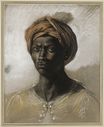Эжен Делакруа - Греция на руинах Миссолонги 1826
 |
 |
 |
 |
 |
 |
 |

Греция на руинах Миссолонги 1826
209x147см холст/масло
Musée des Beaux-Arts de Bordeaux, Bordeaux, France
<< Previous G a l l e r y Next >>
From Los Angeles County Museum of Art:
Painted in 1826 by Eugène Delacroix, the leading French Romantic painter of the day, Greece on the ruins of Missolonghi is one of the most celebrated French paintings of the 19th century. It was executed shortly after the event it commemorates: In 1825, during the Greek war of independence from Ottoman occupation, Turkish troops besieged the city of Missolonghi. The Greek population, already decimated by famine and epidemics, attempted a heroic liberation that ended in tragedy when the Turks killed most of the population of the city. Delacroix, like many European artists and intellectuals, was a fervent supporter of the Greek cause. Most of the painting is dedicated to the figure of Greece herself, represented as a young woman wearing traditional costume. Her posture and expression recall traditional religious images of the Virgin weeping over the body of Christ. The image of suffering Greece succeeded in conveying the plight of the Greeks to the French public.